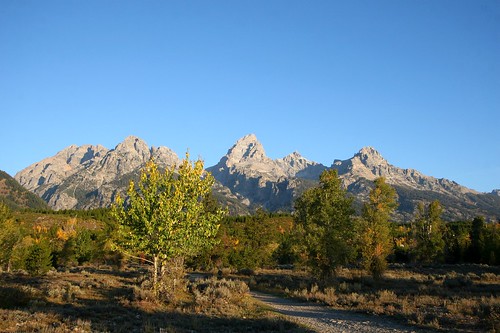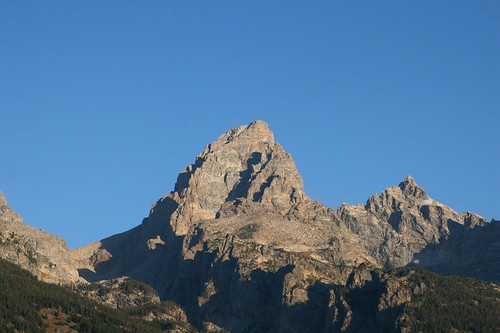Not counting the two travels days where we drove into, and out of, the park, we only gave ourselves one full day in Grand Teton National Park. That could have been two or three days given the amount of stuff we did not attempt to see or do in this park. The one thing, however, that you cannot help but see, and that steals the show, are the mountains themselves. They jut abruptly out of the terrain, with no surrounding foothills, always catching your eyes. You cannot help but watch them. Interestingly, they are part of a fault-block mountain system, formed not because two tectonic plates are colliding, but because the earth is being stretched apart.
On our one full day in the park, we got up early enough to catch the morning sun hitting the mountains. Here are some photos from that effort. The first photo is a repeat, first posted a few days back as part of Blog Action Day.



2 comments:
I am trying to find out which tectonic plate the Grand Tetons are on....can you help?
I did a brief bit of searching on Google, and this is what I came up with.
All of North America resides on the North American Plate. See Wikipedia article here.
The Grand Tetons are built from action along the Teton Fault that is located within the North American Plate. This fault exists because the land is stretching (not collapsing). As it stretches, the fault "breaks", the valley sinks more, and the mountains tilt higher. Read more about this process here.
Post a Comment